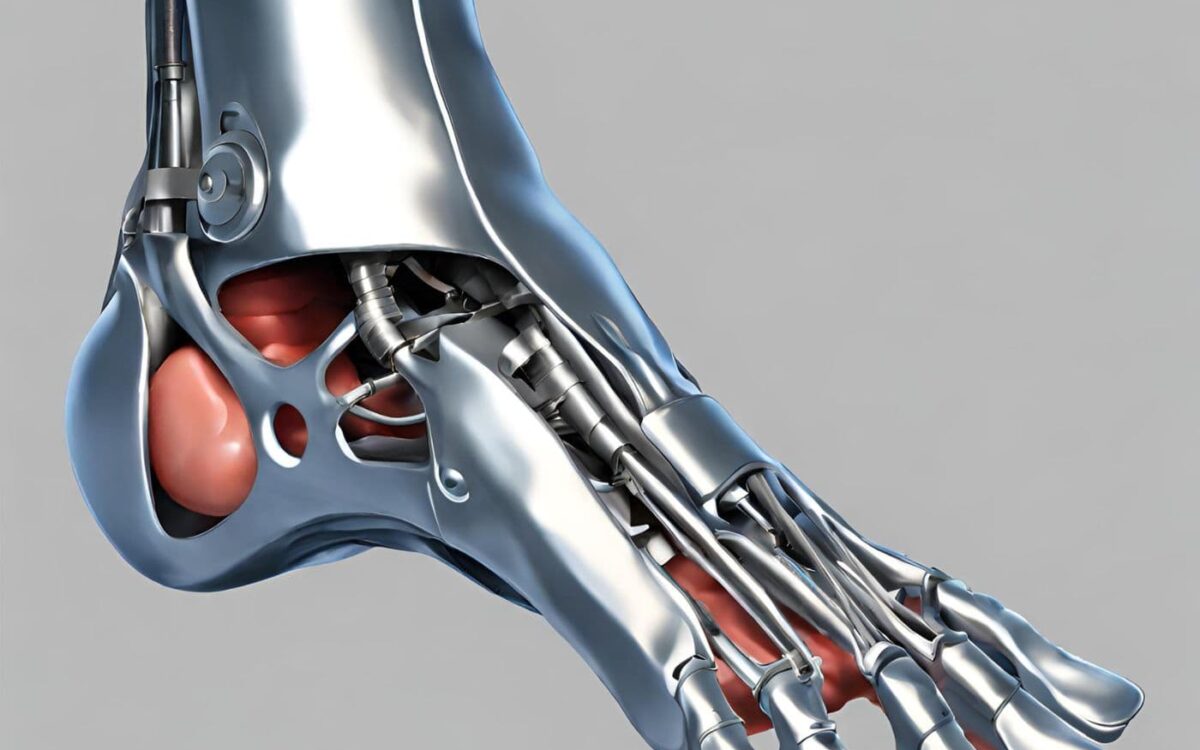Introduction
Imagine the simple act of taking a walk, climbing the stairs, or even playing a casual game of catch these everyday activities can become significant challenges for individuals facing below-knee amputation. The physical limitations can impact not only mobility but also independence and overall well-being. However, advancements in prosthetic technology offer a beacon of hope, with below knee prosthesis and innovative prosthetic toe technology empowering individuals to reclaim their active life and embrace possibilities beyond limitations.
Regaining Mobility: The Role of Below-Knee Prosthetics
Below-knee prosthetics, also known as transtibial prostheses, serve as a life-changing solution for individuals with lower limb amputations below the knee joint. These innovative devices replace the missing limb, restoring the ability to walk and navigate the world with greater independence.
A below-knee prosthesis is comprised of several key components working in harmony:
- Socket: This crucial component fits snugly against the residual limb, providing a secure and comfortable connection between the wearer and the prosthesis.
- Liner: Worn directly on the residual limb, the liner acts as a protective interface, preventing irritation and ensuring comfort.
- Pylon: This rigid component, often made of lightweight yet sturdy materials like carbon fiber, serves as the leg’s main support structure, transferring weight from the socket to the foot.
- Foot: Prosthetic feet come in various designs, each offering specific functionalities. Some feet mimic the natural movement of the ankle joint, while others prioritize stability or cater to specific activities like running or swimming.
The success of a below-knee prosthesis lies in its customization. Prosthetists, specialists trained in the design, fabrication, and fitting of prosthetics, work closely with individuals to create a solution tailored to their unique needs, lifestyle, and activity level.
Beyond Walking: The Advantages of Prosthetic Toes
While below-knee prosthetics play a crucial role in restoring basic walking ability, advancements in technology extend beyond simply replacing the missing limb. Prosthetic toes, available in both fixed and articulated forms, offer a range of biomechanical and psychological benefits that can significantly enhance an individual’s experience.
Fixed toes, while primarily contributing to a more natural appearance, can improve balance and gait stability by distributing weight more evenly across the foot, mimicking the function of natural toes. Articulated toes, on the other hand, offer even greater benefits by allowing for movement at the joint. This increased functionality improves proprioception, the body’s sense of its own position and movement in space. Imagine the difference between walking barefoot on sand and wearing shoes prosthetic toes can bridge that gap, providing a more natural sensory experience and fostering a sense of control.
Beyond the biomechanical advantages, prosthetic toes can also have a significant psychological impact. Having a more complete-looking prosthetic leg can boost self-confidence and improve self-image.
Reclaiming Your Active Life: Practical Applications
The combined capabilities of below-knee prosthetics and prosthetic toes translate into practical benefits that empower individuals to reclaim their active life in profound ways. Here are some specific examples:
Enhancing Daily Activities:
- Navigating uneven terrain: Prosthetic toes, particularly articulated ones, allow for better gripping and pushing off the ground, making it easier to walk on uneven surfaces like gravel, grass, or hiking trails. This newfound confidence opens doors to enjoying outdoor activities and exploring new environments.
- Climbing stairs with ease: The presence of toes facilitates a more natural foot placement when taking stairs, reducing the risk of slipping and improving overall stability. This seemingly simple task becomes significantly less daunting with the added support of prosthetic toes.
- Performing household chores: Daily tasks like carrying groceries, laundry, or gardening can become more manageable with the improved balance and stability offered by below-knee prosthetics with prosthetic toes. This newfound independence empowers individuals to take control of their daily routines and live a more fulfilling life.
Embracing Recreation and Sports:
The possibilities extend beyond daily activities, allowing individuals to rediscover the joy of movement and recreation:
- Participating in sports: Individuals can engage in various sports activities with greater confidence and control, thanks to the improved balance and proprioception provided by prosthetic toes. Whether it’s running, cycling, or even playing sports like tennis, these advancements can contribute to a more enjoyable and inclusive experience.
- Enjoying leisure activities: Activities like dancing, hiking, or simply going for a walk in the park become more accessible and enjoyable with the enhanced functionality of below-knee prosthetics with prosthetic toes. This newfound freedom fosters a sense of well-being and allows individuals to participate fully in life’s activities.
Remember, these are just a few examples, and the possibilities are constantly expanding thanks to ongoing advancements in prosthetic technology.
Living an Active Life: Beyond Physical Benefits
Beyond physical limitations imposed by below-knee amputation lies a world of possibilities, unlocked by advanced prosthetic technology. These sophisticated below-knee prosthetics, often incorporating an innovative prosthetic for toes, empower individuals to reclaim their active life and redefine their potential.
These advancements offer more than just restored walking ability. Improved balance and stability foster confidence in daily activities, while enhanced proprioception creates a more natural walking experience. Additionally, a complete-looking prosthetic leg can significantly boost self-confidence and image.
The impact extends beyond aesthetics. Effortlessly managing daily tasks, rediscovering the joy of movement through sports and activities, and regaining independence become achievable. While cost, maintenance, and customization are considerations, exploring options and prioritizing comfort can address them.
Conclusion
The journey towards reclaiming an active life after below-knee amputation is paved with both challenges and opportunities. While the initial limitations can be daunting, advancements in prosthetic technology offer a beacon of hope. Below-knee prosthetics, often incorporating innovative prosthetic toes, are not simply tools for restoring basic mobility they are instruments of empowerment.
Taking steps forward is not just about overcoming limitations; it’s about embracing life with renewed potential. With the right support, a positive mindset, and the continuous advancements in prosthetic technology, the possibilities are boundless. Individuals can reclaim their active life, redefine what it means to be capable, and step into a future filled with empowerment and endless possibilities.
